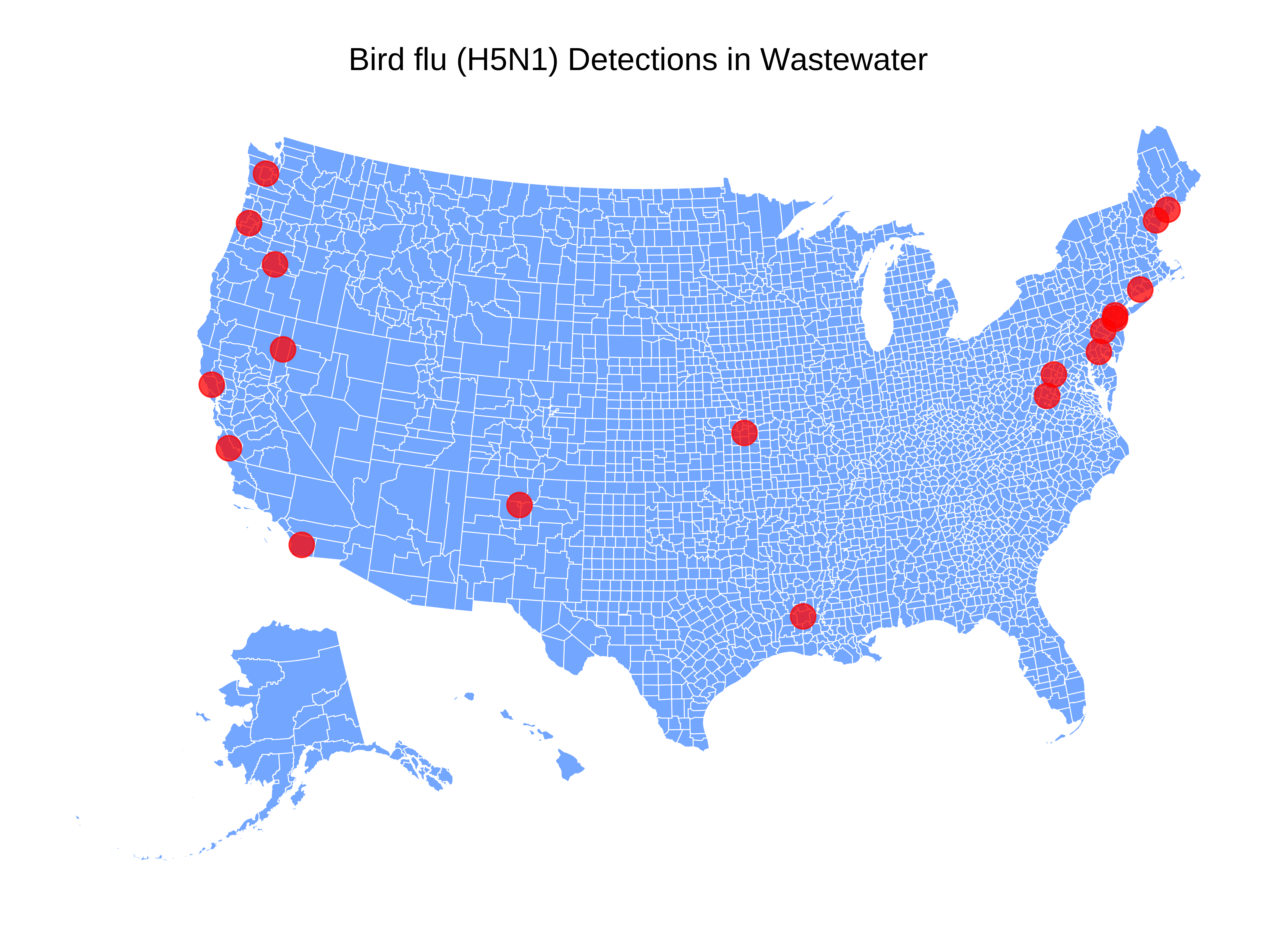
Blog
From Raw Data to Actionable Insights: Biobot’s Evolution of Public Data Sharing

May 17, 2024
Blog update 5/30/24:
We want to thank the public for all the love and support of this work over the years.
After more than three years of making COVID-19 wastewater data available to the public, Biobot has reduced its public data reporting efforts. As we expand our wastewater epidemiology technologies to other population health areas, we no longer have the resources to maintain our COVID-19 dashboard. We decided to sunset the dashboard now because of other publicly available sources of wastewater data, including at the local level through our customers and partners and nationwide through the CDC NWSS program. We are optimistic that government sharing of wastewater data will continue to improve.
This does not mean we believe COVID-19 is no longer a threat, nor are we stopping our work. We see great potential for wastewater to positively impact public health efforts and the healthcare ecosystem in many areas beyond COVID-19. We remain committed to leading in this space and pioneering new applications for wastewater epidemiology.
Wastewater data resources can be found at:
- You can find our risk reports here
- You can find CDC’s COVID tracker here
- Check your local and state public health departments and wastewater treatment facilities as they may be sharing this information directly
Epidemiologists doing important data reporting for the public:
- Your Local Epidemiologist, Katelyn Jetelina
- Force of Infection, Caitlin Rivers
- Helen Branswell, STAT News
Original Post:
Biobot has always believed in the transformative power of wastewater data for public health. We started by making this important data available during the COVID-19 pandemic to fill critical data gaps nationally in an easily digestible way. Our data not only helped the public, but empowered public health departments and researchers to utilize its potential. But as the field of wastewater epidemiology has matured, and the COVID-19 pandemic has evolved, so is our approach to public data sharing.
Biobot has always believed in the transformative power of wastewater data for public health. We started by making this important data available during the COVID-19 pandemic to fill critical data gaps nationally in an easily digestible way. Our data not only helped the public, but empowered public health departments and researchers to utilize its potential. But as the field of wastewater epidemiology has matured, and the COVID-19 pandemic has evolved, so is our approach to public data sharing.
At the start of this year’s respiratory season, we piloted a new model for sharing data with the public that included not only insights on national and regional trends for COVID-19, but also included our data and analysis for our newly launched influenza A and B as well as RSV. Our weekly Respiratory Risk Reports provide insights across the respiratory ‘triple-demic’ of COVID-19, RSV, and influenza. These curated reports contextualize wastewater data nationally and regionally, offering easily-digestible insights from our expert Epidemiology and Data Science teams.
We’re excited to share that, going forward, we will remain focused on providing these contextualized insights from our data to the public. Recognizing the availability of several disparate data sources, our team will not only incorporate our wastewater insights and clinical data, but continually seek to add data streams that offer the most value to the public and help make sense of the respiratory virus landscape each season.
This evolution in our work reflects a shift that has occurred around wastewater data since we began our work in 2017 and took the lead on during the COVID-19 pandemic in 2020:
- A More Informed Public: The public health emergency may be over, but the public remains interested in respiratory health. We are committed to sharing that data and believe in empowering individuals with easily digestible information during virus transmission season.
- The Power of Narrative: Wastewater data is a powerful tool, but raw data alone can be challenging to interpret. We recognize that through curated reports, we can weave a narrative that makes the data actionable for each community.
- Need for More Data: With the emergence of more publicly available wastewater and health data than ever, our expert analysis will not only incorporate wastewater and clinical data, we will evolve over time to incorporate as many data points as possible to contextualize and validate what we’re seeing in the wastewater nationally.
Biobot’s Respiratory Risk Reports:
Biobot’s Respiratory Risk Reports represent the cornerstone of this data-sharing evolution. These reports offer a comprehensive view of the “triple threat” of respiratory viruses: COVID-19, RSV, and Influenza today and will continue to evolve as and when new threats emerge. Each report includes:
- National and Regional Context: Understand how respiratory viruses are circulating across the US and in your specific region.
- Expert Analysis: Gain insights from Biobot’s team of seasoned epidemiologists and data scientists.
- Actionable Information: Make informed decisions about your health, especially during peak season.
- Additional Data Sources: Reports will not only incorporate insights from wastewater data, but also from those our expert epidemiologists find valuable to help further contextualize conditions.
These reports will be published throughout the respiratory virus season and during moments of need (such as in the case of H5N1), equipping the public with valuable information to protect themselves and their communities. Periodic updates will also be shared outside of respiratory virus season as and when they become relevant to the public.
The Future of Biobot’s Public Data:
With the abundance of publicly available wastewater data and our shift to contextualized respiratory risk reports, we are sunsetting our public data visualization platform (www.biobot.io/data).
This evolution represents Biobot’s commitment to maximizing the value of wastewater data. We believe that by adding context and expert analysis, we can empower individuals, communities, and public health officials to take proactive steps towards a healthier future.
We look forward to keeping you informed throughout the upcoming respiratory season with our new Respiratory Risk Reports!





